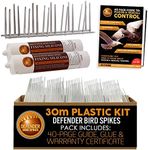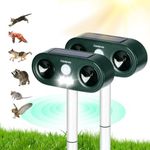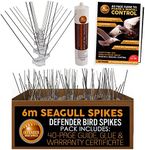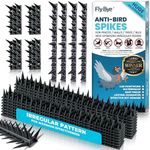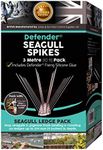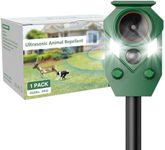Buying Guide for the Best Bird Repellents
Choosing the right bird repellent involves understanding the specific needs of your environment and the type of birds you are trying to deter. Bird repellents come in various forms, including physical barriers, visual deterrents, sound devices, and chemical solutions. Each type has its own set of advantages and is suited for different situations. It's important to consider the area you need to protect, the species of birds causing issues, and any potential impact on non-target wildlife or humans. By evaluating these factors, you can select a bird repellent that effectively addresses your problem without causing harm to the environment.Type of RepellentThe type of bird repellent is crucial because it determines how the product will deter birds. There are several types: physical barriers like nets and spikes, visual deterrents such as reflective tapes or predator decoys, sound devices that emit distress calls or predator noises, and chemical repellents that use scents or tastes birds dislike. Physical barriers are effective for preventing birds from landing or nesting, while visual and sound deterrents are better for open areas. Chemical repellents are useful for specific surfaces or plants. Choose based on the area you need to protect and the behavior of the birds you are dealing with.
Coverage AreaCoverage area refers to the size of the space that the bird repellent can effectively protect. This is important because it ensures that the entire area you want to safeguard is covered. Smaller areas like balconies or patios might only need a small device or a few deterrents, while larger areas like gardens or rooftops may require more extensive solutions. Consider the size of the area and choose a repellent that can cover it adequately, possibly combining different types for maximum effectiveness.
Target Bird SpeciesDifferent bird species may respond differently to various repellents, so knowing which birds you are targeting is important. Some repellents are designed to deter specific species, while others are more general. For example, larger birds like pigeons might be deterred by spikes, while smaller birds might be more affected by nets or chemical repellents. Identify the species causing the problem and choose a repellent that is known to be effective against them.
Environmental ImpactThe environmental impact of a bird repellent is important to consider, especially if you are using it in a natural or residential area. Some repellents, particularly chemical ones, can affect non-target wildlife or plants. Others, like sound devices, might disturb pets or neighbors. Look for repellents that are safe for the environment and non-target species, and consider any regulations or guidelines in your area regarding wildlife protection.
Ease of Installation and MaintenanceEase of installation and maintenance refers to how simple it is to set up and maintain the bird repellent. This is important because a product that is difficult to install or requires frequent maintenance might not be practical for your situation. Physical barriers like nets and spikes might require more effort to install but need little maintenance, while sound devices might need regular battery changes or adjustments. Consider your ability to install and maintain the repellent when making your choice.

